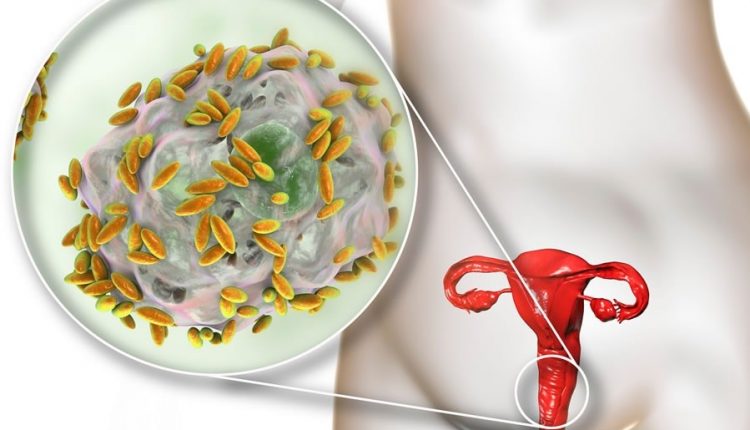
Vaginitis: symptoms and how to treat it
Among the most common diseases of the female genital apparatus is vaginitis, an inflammation of the vagina that can be more or less disabling and is not always associated with infectious states
Vaginitis can be caused by mycetes, mycotic vulvo-vaginitis (commonly known as Candida), bacteria (Gardnerella), protozoa (Trichomonas), but it can also be triggered by reactions to the use of irritating products or hormonal changes that occur during a woman’s lifetime.
What causes vaginitis? And what are the symptoms and treatment needed to cure it?
Symptoms of vaginitis
The characteristic symptoms of vaginitis are easily recognisable and include:
- Change in colour, smell and/or quantity of vaginal discharge (leucorrhoea)
- burning and/or itching which are the elective symptoms
- pain or irritation during sexual intercourse
- painful urination
- light bleeding
The specificity of the symptoms generally helps to distinguish the type of vaginitis from the onset.
Symptoms may occur intermittently, when the condition heals spontaneously and then recurs, or be recurrent, if it recurs after specific therapy, or chronic.
Vaginitis, what are the causes?
Due to its particularly acidic pH of 4-4.5, the vaginal ecosystem is hostile to the development of microorganisms and, therefore, to the infections that they can cause in the body.
However, the vaginal pH can undergo changes, often due to incorrect habits, thus favouring the proliferation of pathogenic microorganisms.
Vaginal pH can be lowered in particular due to the use of intimate and non-physiological cleansers with pH7, failure to change tampons, thus worn for more than three hours, and the use of tight-fitting, synthetic trousers and clothing that contribute to an increase in body temperature.
However, the main risk factor for the development of vaginitis is sexual intercourse, both because contact with male seminal fluid increases the vaginal pH, and because contagion with sexually transmitted pathogens is favoured during the act.
Finally, the vaginal pH can also drop during menstruation.
The importance of a gynaecological examination
If the symptoms of vaginitis occur, one must refer to the gynaecological specialist who, during the gynaecological examination, will assess the symptoms reported by the patient and perform the vaginal swab necessary for diagnosis.
The vaginal swab, in fact, allows biological material to be taken, which will then be analysed and cultured to search for and examine possible pathogens.
Bacterial vaginosis: antibiotic treatment useful
The vagina is usually colonised by Doderlein’s bacilli, which have an antibacterial function.
When external bacteria replace Doderlein’s bacilli and proliferate, resulting in infection, bacterial vaginosis develops.
Among the bacteria responsible for this pathology, the most common is Gardnerella vaginalis, but one can also see infections with Bacteroides, Mycoplasma and Mobiluncus.
Bacterial vaginosis is mainly transmitted sexually and is especially dangerous for pregnant women.
Gardnerella Vaginalis can cause premature birth.
Among the symptoms of bacterial vaginosis, the most common are greyish, fluid-looking and foul-smelling vaginal discharge and internal burning.
Treatment for bacterial vaginosis usually involves systemic antibiotic treatment with Clindamycin or Metronidazole.
Candida: symptoms
Candida is caused by the infection of yeasts that proliferate inside the vagina by adhering to its epithelium.
It manifests itself with symptoms such as thick, whitish vaginal discharge and severe itching.
Precisely because of the itching, those who develop Candida should avoid wearing synthetic, tight-fitting clothing.
Treatment for Candida usually involves the use of topical ova and creams.
In the event of frequent recurrences – possible due to the resistance of the spores and the ease with which the disease is transmitted sexually – oral therapy may be appropriate.
Trichomonas vaginitis: what is it?
When we speak of Trichomonas we are referring to a single-celled organism present in the male and female genital tract, which finds it difficult to survive outside the body and proliferates particularly if the vaginal pH increases in acidity compared to normal.
Trichomonas infection is mainly transmitted sexually, but it is also possible to contract it from using public or shared toilets or sharing towels and clothes.
Symptoms of Trichomonas vaginitis include: yellow-green vaginal discharge with a foamy, foul-smelling appearance, vulvar and/or vaginal burning.
This type of vaginitis is treated with metronidazole, the treatment should also be followed by the partner.
Allergic vaginitis: tracing the allergen is essential
Allergic vaginitis is associated with hypersensitivity or delayed reactions caused by contact of the vulva and vagina with external agents such as
- creams and soaps
- perfumed toilet paper
- vaginal douches
- lubricants
- ova
Symptoms of allergic vaginitis, in addition to the typical burning and itching, include the appearance of erythema and odourless discharge.
To treat allergic vaginitis, it is necessary to identify the allergen.
Read Also
Emergency Live Even More…Live: Download The New Free App Of Your Newspaper For IOS And Android
Vaginal Candida: Causes, Symptoms And Prevention
Gardnerella Vaginalis Vaginosis: Symptoms, Diagnosis And Treatment
Inflammations Of The Genital Apparatus: Vaginitis
Vaginitis: What Are The Main Infections Of The Vagina?
How Does Cystitis Manifest Itself?
Cystitis, Antibiotics Are Not Always Necessary: We Discover Non-Antibiotic Prophylaxis
Polycystic Ovary Syndrome: Signs, Symptoms And Treatment
Vulvodynia: What Are The Symptoms And How To Treat It
What Is Vulvodynia? Symptoms, Diagnosis And Treatment: Talk To The Expert
Accumulation Of Fluid In The Peritoneal Cavity: Possible Causes And Symptoms Of Ascites
What’s Causing Your Abdominal Pain And How To Treat It
Pelvic Varicocele: What It Is And How To Recognise The Symptoms
Can Endometriosis Cause Infertility?
Transvaginal Ultrasound: How It Works And Why It Is Important
Candida Albicans And Other Forms Of Vaginitis: Symptoms, Causes And Treatment
What Is Vulvovaginitis? Symptoms, Diagnosis And Treatment
Urinary Tract Infections: Symptoms And Diagnosis Of Cystitis
Transvaginal Ultrasound: How It Works And Why It Is Important
Pap Test, Or Pap Smear: What It Is And When To Do It
Mammography: A “Life-Saving” Examination: What Is It?
Mammography: How To Do It And When To Do It
Pap Test: What Is It And When To Do It?



